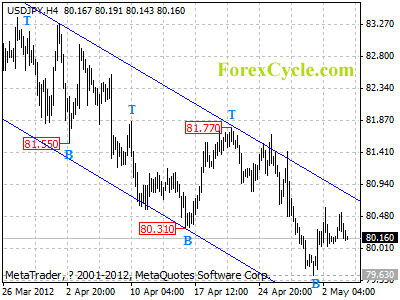In order to talk about cycles, and how they can help your understanding of world markets, brings me to an idea I want to share with you. It’s also an idea that describes and predicts great change in the world.
The idea is that the world’s financial markets might be subject to the same kind of polarity reversal our own planet has periodically experienced. This reversal amounts to an enormous change in asset allocation models and even the way people think about risk. And according to PIMCO’s Ramin Toloui, the way to start preparing for this rebalancing of growth is to buy more government bonds in emerging markets.
A rebalancing of the world’s available pool of investable cash, based on a fundamental shift in attitudes toward risk, is basically the end of the world for the US dollar standard. PIMCO doesn’t say that. But it’s telling investors to plan for it and to profit from it.
But let me back up a second and explain what I mean about reverse polarity in scientific terms. For the planet, I’m talking about an event where the magnetic poles of the Earth reverse. North becomes South and South becomes North. It’s actually happened quite often, according to scientists And it will certainly happen again.
As you might expect, this kind of change can be pretty disruptive, especially if you’re eating your lunch at your desk on a Tuesday. It probably won’t be good for real estate values…anywhere. In fact, some scientists speculate that reverse polarity is what allowed the solar wind to blow away the atmosphere on Mars and make that planet less hospitable to life.
A Sudden Change of Direction for World Markets
I thought of reverse polarity because it’s one of the only metaphors that could describe a sudden change in the way the world’s large money managers and investors perceive risk. The current distinction is between the developing world and the developed world, between emerging markets and emerged markets, or between the US/Europe/Australia/ Japan and Brazil/China/Russia/South Africa/India/Indonesia/Korea etc.
Up until 2007, the idea is that one category of countries (the developed world) is “safe” while the other countries are “risky.” Thus, “risk on” trades saw investors buy emerging markets and commodities while “risk off” trades saw rallies in the US dollar, yen, euro (generally) and blue chip developed world stocks.
It’s a pretty simple way of thinking about the world markets and where to put your money at the right time. The only trouble is this description of the world no longer matches the world. The description needs to change. And like any change in investment markets, being ahead of it is better than getting run over by it.
Besides, after two years of constant crisis, the government bonds of developed world countries like the US, Spain, the UK, and Italy can hardly be described as “safe.” And in any event, their yields (on the shorter-term debt) are all nearing zero in nominal terms and below zero in real terms. The news about various bond auctions is a giant distraction.
Meanwhile, in the so-called developing world, government debt ratios as a percentage of GDP tend to be lower, savings rates higher, and GDP per/capita growing (rather than shrinking). Yet investments in the so-called developing world are still considered “risky” while US debt is considered “safe.”
This general attitude toward risk is subject to a pole reversal. It occurred to me that attitudes toward risk can change quickly too, with huge investment consequences. Attitudes at the margin are already changing. The fact that it’s showing up in PIMCOs advice to clients is another sign that the idea could reach a “tipping point.”
But a “tipping point” is another way of saying an event needs a catalyst to initiate what chemists would call a “phase change.” Solids don’t turn to liquids without a phase change. Liquids don’t turn into gasses without a phase change. And investors don’t suddenly change their attitude toward the world without a similar phase change.
Dan Denning
Editor, Australian Wealth Gameplan
From the Archives…
Why Graphite is the High Tech Commodity of the Future
2012-04-27 – Dr. Alex Cowie
Why Gold is Hands-Down the Best “Money” You Can Buy
2012-04-26 – Kris Sayce
12% Compulsory Super – Get Ready for the Government’s Next Tax Grab
2012-04-25 – Kris Sayce
Westfield – The Aussie Retail Stock That Could Make You Money
2012-04-24 – Shae Smith
Why Natural Gas Is Still My Favourite Resource Opportunity
2012-04-23 – Kris Sayce
For editorial enquiries and feedback, email letters@moneymorning.com.au





